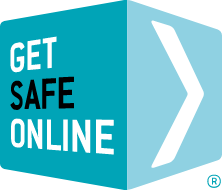A firewall protects you against:
- Hackers breaking into your computer.
- Worms – types of viruses that spread from computer to computer over the internet.
- Some outgoing traffic originating from a virus infection.
What a firewall does NOT do:
A firewall isn’t sufficient on its own to guarantee security, but it is the first line of defence. You also need to take the other protective steps outlined on this website. However, a firewall provides limited or no protection against the following:
- If you give permission for other computers to connect to yours.
- If it is switched off, disabled or contains many exceptions or open ports.
- Most viruses.
- Spam.
- Spyware installations.
- Any kind of fraud or criminal activity online.
- If you or a virus has created a back door through the firewall.
- People with physical access to your computer or network.
- Data introduced to the computer other than online, eg via USB connected devices, CD/DVD etc.
- Attacks after a network has been compromised.
- Traffic that appears to be legitimate.
However, none of these things give a reason NOT to install a firewall, as this alone is not enough for complete security.
It is safest to assume that your internet service provider does NOT provide any kind of firewall, so make sure you have the right software to protect yourself.
Types of firewalls
Personal firewalls
Personal firewalls should be installed on each computer that is connected to the internet and monitors (and blocks, where necessary) internet traffic. They are also sometimes known as ‘software firewalls’ or ‘desktop firewalls’.
Windows Firewall is a basic personal firewall. It is free, included with Windows operating systems. In Windows 8, Windows 7 and Vista, the Firewall defaults to active, so you do not need to worry about configuring it yourself.
If you wish, you could replace Windows Firewall with another personal firewall of your choice, including the type incorporated in some internet security packages, or standalone firewall software which can be downloaded from the internet, some of which is free of charge.
Hardware firewalls
Medium-sized and large businesses may need a hardware firewall – in addition to personal firewalls – depending on the configuration of their IT infrastructure. Your internal or external IT support resource will be able to recommend, source, install and configure the most suitable one for your business needs.
Check if your Windows Firewall is switched on
In Windows 10 and Windows 8, go to Control Panel, select System and Security, then select Windows Firewall. The Windows Firewall state is indicated under Home or Work (private) networks.
